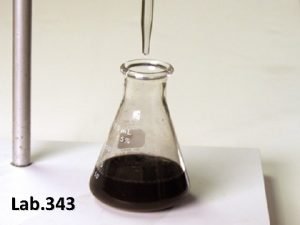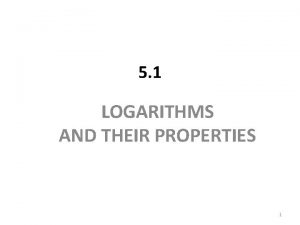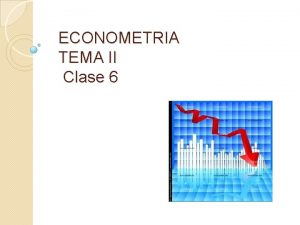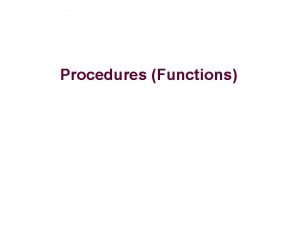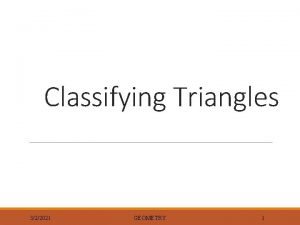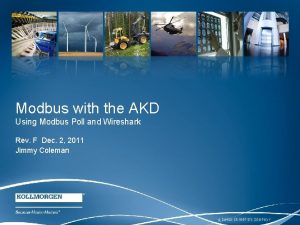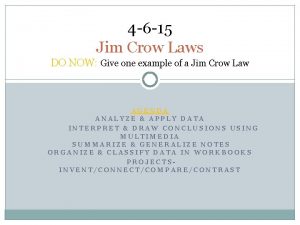Please Log into Poll Everywhere Two ways to






















































- Slides: 54

Please Log into Poll Everywhere! Two ways to vote: 1. Poll Everywhere app 2. via the web 1. Download Poll Everywhere App 2. Open any browser Type: Pollev. com/blairlonsberry Type in: blairlonsberry

Lid Lesions: Relax or Refer Blair Lonsberry, MS, OD, MEd. , FAAO Professor of Optometry Pacific University College of Optometry blonsberry@pacificu. edu

Aussie Patient Story � Male 59 Anglo Celtic heritage � Asymptomatic , accidental detection by daughter following island holiday Bali and further sun exposure August 2016 � Hx : surfer and excessive sun exposure - coconut oils etc for first 2 decades of life.

Aussie Patient Story � Initial dermatologist opinion – BCC (basal cell carcinoma) � BUT biopsy confirmed aggressive malignant melanoma, 2. 2 mm thick , 5 mm cell growth rate

Aussie Patient Story � Initial excision September 14 2016. � Found to have invaded sentinel axillary node – � further surgery October 6 complete axillary dissection right underarm - pathology clear. � Final dx - stage 3 malignant melanoma.

Eyelid Lumps and Bumps • 15 -20% of periocular skin lesions are malignant • Benign vs malignant: – Benign lesions are: • Well circumscribed and possibly multiple • Slow growing • Less inflamed • Look “stuck on” instead of invasive and deep

Is it Benign? • • H: loss of hair bearing structures? A: asymmetrical? A: abnormal blood vessels (telangectasia’s)? B: borders irregular? B: bleeding reported? C: multicolored? C: change in the size or color of the lesion? D: overall diameter > 5 mm?

Benign Eyelid Lesions • Most common types of benign eyelid lesions include: – Squamous papillomas (skin tags)-most common – Hordeola/chalazia – Epidermal inclusion cysts – Seborrheic keratosis – Apocrine hidrocystoma – Capillary hemangioma (common vascular

Benign Eyelid Lesions: Squamous Papilloma • Most common benign lesion of the eyelid – Also known as fibroepithelial polyp or skin tag • Single or multiple and commonly involve eyelid margin

Benign Eyelid Lesions: Squamous Papilloma • Flesh colored and maybe: • sessile (no stalk) or pedunculated (with a stalk) • Differentials: • seborrheic keratosis, • verruca vulgaris and • intradermal nevus • Treatment is excision at the base of the lesion. • Radiosurgery: Ellman • Cryotherapy • Chemical removal e. g TCA

Radiofrequency (RF) Surgery • Radiosurgery is the passage of high frequency radiowaves through soft tissue to cut, coagulate, and/or remove the target tissue • Cuts and coagulates at the same time • Nearly bloodless field • Minimal biopsy artifact damage • Quick and easy (to do and to learn) – Pressureless & bacteria-free incisions • • Minimal lateral heat Minimal Post-op pain Rapid healing Fine control with variety of tips

Benign Eyelid Lesions: Seborrheic Keratosis • Also known as senile verruca • Common and may occur on the face, trunk and extremities • Usually affect middle-aged and older adults, occurring singly or multiple, greasy, stuck on plaques

Benign Eyelid Lesions: Seborrheic Keratosis • Color varies from tan to brown and are not considered pre-malignant lesions • Differentials include skin tags, nevus, verruca vulgaris, actinic keratosis and pigmented BCC • Simple excision for biopsy or cosmesis or to prevent irritation.

Benign Eyelid Lesions: Hordeola • Acute purulent inflammation – Internal occurs due to obstruction of MG – External (stye) from infection of the follicle of a cilium and the adjacent glands of Zeiss or Moll • Painful edema and erythema,

Benign Eyelid Lesions: Hordeola • Typically caused by Staph and often associated with blepharitis • Treatment includes: • hot compresses (e. g. Bruder) • topical antibiotics (? ) • possibly systemic antibiotics • Augmentin 875 mg BID x 7 days • Keflex 500 mg TID-QID x 7 days • Treat concurrent blepharitis

Demodex • Demodex is a natural part of human microbiome • Demodex folliculorum live in hair follicles, primarily on the face, as well as in the meibomian glands of the eyelids; • Demodex brevis live in the sebaceous glands of the skin.

Demodex • Demodex folliculorum frequently occur in greater numbers in those with rosacea and this overabundance is thought to trigger an immune response or possibly certain bacteria associated with the Demodex

Treatments for Demodex Fromstein, S. R. , Harthan, J. S. , Patel, J. , & Opitz, D. L. (2018). Demodex blepharitis: clinical perspectives. Clinical optometry, 10, 57– 63. doi: 10. 2147/OPTO. S 142708

Preseptal Cellulitis �Infection and inflammation located anterior to the orbital septum and limited to the superficial periorbital tissues and eyelids. �Usually follows internal hordeolum or sinus infection (possibly trauma) �Eyelid swelling, redness, ptosis, pain and low grade fever.

Differentiating Orbital vs. Preseptal FINDING ORBITAL PRESEPTAL Visual Acuity Decreased Normal Proptosis Marked Absent Chemosis and Hyperemia Marked Rare/Mild Pupils RAPD Normal Pain and Motility Restricted and Painful Normal IOP Normal Temperature 102 - 104 Normal/mild elevation HA and Assoc. Symptoms Common Absent Treatment: Orals for Preseptal, Often IV for Orbital

Preseptal Cellulitis �Tx: � Augmentin 500 mg TID or 875 mg BID for 5 -7 days �Keflex 500 mg QID 5 -7 days �or if moderate to severe IV Fortaz (ceftazidime) 1 -2 g q 8 h. �If MRSA possible, consider Bactrim/Septra

Penicillins: Augmentin • Clavulin in Canada • Augmentin is amoxicillin with potassium clavulanate (clavulanic acid 125 mg). • Clavulanate is a B-Lactamase inhibitor which reduces a bacteria’s ability to negate the effect of the amoxicillin by inactivating penicillinase (enzyme that inactivates the antibiotic affect).

Penicillins: Augmentin. Adults: – 250 TID, 500 mg tab BID-TID depending on what you are treating (also available in chewable tablets and suspension) – or 875 mg q 12 hr (bid) – 1000 mg XR: q 12 hr and not for use in children <16 Peds: <3 mos 30 mg/kg/day divided q 12 hrs using suspension • >3 mos 45 -90 mg/kg/day divided q 12 hrs (otitis media 90 mg for 10 days)

Cephalosporins • Closely related structurally and functionally to the penicillins, – have the same mode of action, – affected by the same resistance mechanisms. – tend to be more resistant to B-lactamases. • classified as 1 st, 2 nd, 3 rd, 4 th and now 5 th generation based largely on their bacterial susceptibility patterns and resistance to B-lactamases. • Typically administered IV or IM, poor oral absorption.

Cephalosporins • 1 st generation: cefadroxil (Duricef), cefazolin • (Ancef), cephalexin (Keflex), and cephalothin • 2 nd generations: cefaclor (Ceclor), cefprozil, cefuroxime (Zinacef), cefotetan, cefoxitin • 3 rd generation: cefdinir (Omnicef), cefixime, cefotaxime (Claforan), ceftazidime (Fortaz), ceftibuten, ceftizoxime, ceftriaxone (Rocephin IM/IV). • 4 th generation: cefepime • Keflex, Ceclor and Omnicef (all orally administered) are effective against most gram positive pathogens and especially good for skin

Cephalosporins • Keflex (cephalexin) 1 st Generation: – treatment of respiratory, GI, skin and skin structure, and bone infections as well as otitis media – Adults: 250 -1000 mg every 6 hours • - typical dosing 500 every 6 hours – Children: 25 -100 mg/kg/day divided 6 -8 hours

Co-Trimoxazole (Bactrim/Septra) • Combination of trimethoprim and sulfamethoxazole – shows greater antimicrobial activity than equivalent quantities of either drug alone. • Has broader spectrum of action than the sulfa’s and is effective in treating: – UTIs and respiratory tract infections – often considered for treatment of MRSA skin infections

Co-Trimoxazole (Bactrim/Septra) • Available: – Bactrim/Septra tablets: – contains 80 mg trimethoprim and 400 mg sulfamethoxazole – dosing 2 tablets every 12 hours – Bactrim DS/Septra DS (Double Strength) • contains 160 mg trimethoprim and 800 mg sulfamethoxazole • Dosing 1 tablet every 12 hours

Benign Eyelid Lesions: Chalazia • Focal inflammatory lesion resulting from obstruction of a meibomian or Zeis gland • Results in a chronic lipogranulomatous inflammation

Benign Eyelid Lesions: Chalazia • May drain spontaneously or persist as a chronic nodule • Recurrent lesions need to exclude a sebaceous gland carcinoma • Treatment varies from: • hot compresses/massage, • intralesional steroid injection (triamcinolone (Kenalog. R) or • surgical drainage • Latest: IPL (Intense Pulsed Light)

Benign Eyelid Lesions: Pyogenic Granuloma • Most common acquired vascular lesion to involve the eyelids • Usually occurs after trauma or surgery as a fast growing, fleshy, red-to-pink mass which readily bleeds with minor contact

Benign Eyelid Lesions: Pyogenic Granuloma • Differential include Kaposi’s sarcoma • Treatment can include use of steroid to reduce the inflammation or surgical excision at the base of the lesion.

Benign Eyelid Lesions: Epidermal Inclusion Cyst • Appear as slowgrowing, round, firm lesions of dermis or subcutaneous tissue • Eyelid lesions are usually solitary, mobile and less than 1 cm • Maybe congenital or may arise from

Benign Eyelid Lesions: Epidermal Inclusion Cyst • May become infected or may rupture • Differentials include: – dermoid cyst, – pillar cyst or – neurofibroma • Treatment is complete excision to prevent recurrence.

Benign Eyelid Lesions: Capillary Hemangioma • Most common vascular lesion in childhood (5 -10% of infants) • Females 3: 2 • Periorbital may appear as a superficial cutaneous lesion, subcutaneous, deep orbital or combination • 1/3 visible at birth, remainder manifest by 6 months • 75% regress to some extent by 7 years

Benign Eyelid Lesions: Capillary Hemangioma • Classic superficial lesion – strawberry lesion, appears as a red, raised, nodular mass which blanches with pressure • Most common ocular complication is amblyopia • regression is common, treatment is reserved for patients who have specific ocular, dermatologic or systemic indications for intervention.

Benign Eyelid Lesions: Capillary Hemangioma • Mainstay treatment includes the use of oral propanolol • Recent protocols include use of topical timolol 0. 25% for superficial hemangiomas

Which of the following lid nevi have the greatest chance to convert to a malignant melanoma? 1 2 3 4

• Lid nevi: Lid Nevi – congenital or acquired – occur in the anterior lamella of the eyelid and can be visualized at the eyelid margin. • The congenital eyelid nevus is a special category with implications for malignant transformation. • With time, slow increased pigmentation and slight enlargement can occur. • An acquired nevus generally becomes apparent between the ages of 5 and 10 years as a small, flat, lightly pigmented lesion

Congenital Nevus • The nevus is generally well circumscribed and not associated with ulceration. • The congenital nevus of the eyelids may present as a "kissing nevus" in which the melanocytes are present symmetrically on the upper and lower eyelids. – Presumably this nevus was present prior to eyelid separation

Congenital Nevus • Most nevi of the skin are not considered to be at increased risk of malignancy. – However, the large congenital melanocytic nevus appears to have an increased risk of malignant transformation of 4. 6% during a 30 year period

Acquired Lid Nevi • Acquired nevi are classified as: – junctional (involving the basal epidermis/dermis junction), typically flat in appearance – intradermal (involving only the dermis), tend to be dome shaped or pedunculated – compound (involving both dermis and epidermis) tend to be dome shaped

Pre-Malignant Eyelid Lesions: Keratoacanthoma • Appears as a solitary, rapidly growing nodule on sun exposed areas of middleaged and older individuals • Nodule is usually umbilicated with a distinctive crater filled with keratin • Lesion develops over weeks and undergoes spontaneous involution within 6 mo to leave an atrophic scar • Complete excision is recommended as there are invasive variants

Pre-Malignant Eyelid Lesions: Actinic Keratosis • Also known as solar or senile keratosis • Most common premalignant skin lesion • Develops on sunexposed areas and commonly affect the face, hands and scalp (less commonly the eyelids) – Predominately white

Pre-Malignant Eyelid Lesions: Actinic Keratosis • Appear as multiple, flattopped papules with an adherent white scale. • Development of SCC in untreated lesions as high as 20% • Management is surgical excision or cryotherapy (following biopsy)

Malignant Eyelid Lesions: Basal Cell Carcinoma (BCC) • Most common malignant lesion of the lids (85 -90% of all malignant epi eyelid tumors) • 50 -60% of BCC affect the lower lid followed by medial canthus 25 -30% and upper lid 15% • Metastases is rare but local invasion is common and can be very destructive

Malignant Eyelid Lesions: Basal Cell Carcinoma • Diagnosis is initially made from its clinical appearance, especially with the noduloulcerative type with its raised pearly borders and central ulcerated crater – categorized into two basic types: noduloulcerative and morpheaform – The morpheaform variant is typically diffuse, relatively flat with indistinct borders. This variant is more aggressive and can be invasive despite showing less obvious features.

Malignant Eyelid Lesions: Basal Cell Carcinoma • Definitive diagnosis made on histopathological examination of biopsy specimens – loss of adjacent cilia is strongly suggestive of malignancy and occurs commonly with basal cell carcinoma of the eyelid • Surgery is generally accepted as treatment of choice – Mohs’ surgery technique

Malignant Eyelid Lesions: Squamous Cell Carcinoma (SCC) • Much less common than BCC on the eyelid but has much higher potential for metastatic spread • Typically affects elderly, fair-skinned and usually found on the lower lid

Malignant Eyelid Lesions: Squamous Cell Carcinoma (SCC) • Presents as an erythematous, indurated, hyperkeratotic plaque or nodule with irregular margins • Lesions have a high tendency towards ulceration and tend to affect lid margin and medial canthus

Malignant Eyelid Lesions: Sebaceous Gland Carcinoma • Highly malignant neoplasm that arises from the meibomian glands, Zeis and the sebaceous glands of the caruncle and eyebrow • Aggressive tumor with a high recurrence rate, significant metastatic potential and notable mortality rate • rates of misdiagnosis have been reported as high as 50%

Malignant Eyelid Lesions: Sebaceous Gland Carcinoma • Relatively rare, 3 rd most common eyelid malignancy • Uncommon in the Caucasian population and represents only 3% of eyelid malignancies, – most common eyelid malignancy in Asian Indian population, where it represents approximately 40% or more of eyelid malignancies

Malignant Eyelid Lesions: Malignant Melanoma • MM of the eyelid accounts for about 1% of all eyelid malignancies • Risk factors include congenital and dysplastic nevi, changing cutaneous moles, excessive sun exposure and sun sensitivity, family history, age greater than 20 and white. • History of severe sunburns rather than cumulative actinic exposure thought to be a major risk factor

Malignant Eyelid Lesions: Malignant Melanoma
 Poll everywhere register
Poll everywhere register Poll everywhere nus
Poll everywhere nus Poll everywhere nus
Poll everywhere nus Logos everywhere
Logos everywhere Jika log 2 = 0 301 dan log 3 = 0 477
Jika log 2 = 0 301 dan log 3 = 0 477 Sifat-sifat logaritma
Sifat-sifat logaritma 1 + 3,3 log 80
1 + 3,3 log 80 Jika log 2 = 0, 301 nilai log 0,6 adalah
Jika log 2 = 0, 301 nilai log 0,6 adalah Diketahui log 2 = 0 301 dan log 5 = 0 699
Diketahui log 2 = 0 301 dan log 5 = 0 699 Selesaikan persamaan eksponen 3ˣ = 81 adalah
Selesaikan persamaan eksponen 3ˣ = 81 adalah Jika panjang ap 8 cm bq 5 cm
Jika panjang ap 8 cm bq 5 cm Materi persamaan dan pertidaksamaan logaritma
Materi persamaan dan pertidaksamaan logaritma Romans 3:10
Romans 3:10 Please be quiet. i (try) to sleep
Please be quiet. i (try) to sleep Power law log log plot
Power law log log plot Power law log log plot
Power law log log plot How do you get rid of ln
How do you get rid of ln Log m - log n
Log m - log n Log k = log a - ea/rt
Log k = log a - ea/rt Log exp
Log exp Persamaan 7 log 217 + 7 log 31 ialah
Persamaan 7 log 217 + 7 log 31 ialah Logarithms and their properties
Logarithms and their properties Desmos logarithms
Desmos logarithms Modelo lin log
Modelo lin log Examples of exponential equations
Examples of exponential equations Log m-log n
Log m-log n Log multiply log
Log multiply log Laws of logarithms
Laws of logarithms Azade nazi
Azade nazi Mention two ways of modification of instinct
Mention two ways of modification of instinct In what two ways does galileo seek to appease the church
In what two ways does galileo seek to appease the church Risk projection in software engineering
Risk projection in software engineering Postulate 1-4
Postulate 1-4 Passive in two ways
Passive in two ways The design has big squares and circles
The design has big squares and circles Name two ways to prevent conflicts from building
Name two ways to prevent conflicts from building Two ways images
Two ways images The two ways
The two ways When does a physical change occur study jams
When does a physical change occur study jams How does nick characterize the guests at gatsby’s party
How does nick characterize the guests at gatsby’s party Two ways to classify triangles
Two ways to classify triangles Erik poll
Erik poll Daytoro
Daytoro Sms based poll monitoring system
Sms based poll monitoring system Poll day monitoring system
Poll day monitoring system Poll ev.com
Poll ev.com Modbus rtu wireshark
Modbus rtu wireshark What is the answer
What is the answer Bank robbery java code
Bank robbery java code Jim crow cartoon character
Jim crow cartoon character Doodle poll login
Doodle poll login Gallup engagement index
Gallup engagement index Louisiana 1918 poll tax receipt
Louisiana 1918 poll tax receipt Erik poll
Erik poll Poll monitoring system
Poll monitoring system


















